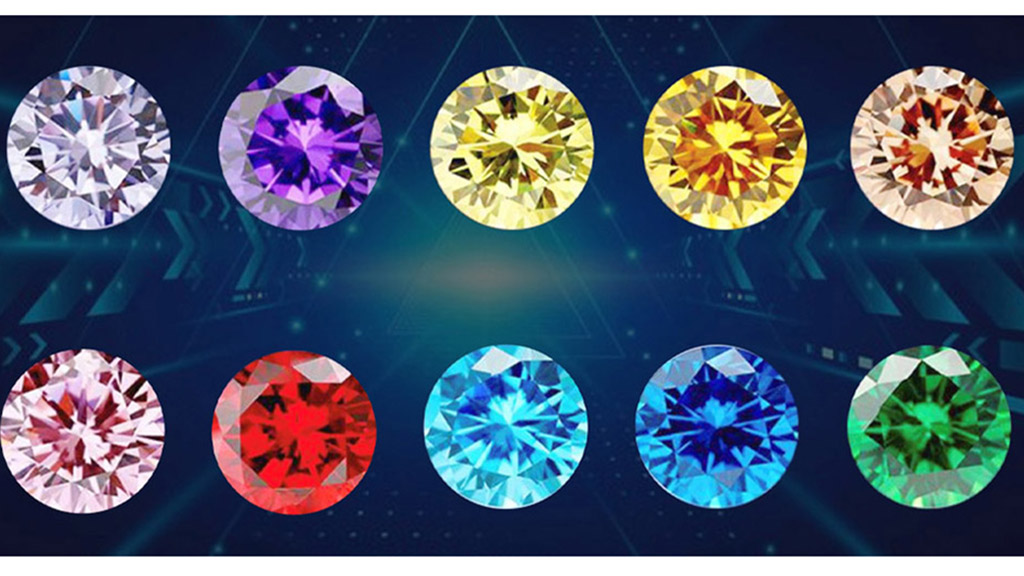GEMS Education
What is Cubic Zirconia ?
What is Cubic Zirconia ?
Cubic Zirconia (or CZ) is zirconium oxide (ZrO2 ), is widely synthesized for use as a diamond simulant and it is a lab made created stone with a specific gravity of between 5.6-6.00 and at about 8.5 hardness on Mohs scale, which is harder than most natural gems. Its refractive index is high at 2.15 - 2.18 (B-G interval) and its luster is very good. Its dispersion is very high at 0.058 - 0.066, exceeding that of diamond (0.044).
Click here for more information about Cubic Zirconia.
Cubic zirconia (abbreviated CZ) is the cubic crystalline form of zirconium dioxide (ZrO2). The synthesized material is hard and usually colorless, but may be made in a variety of different colors. It should not be confused with zircon, which is a zirconium silicate (ZrSiO4). It is sometimes erroneously called cubic zirconium.
Because of its low cost, durability, and close visual likeness to diamond, synthetic cubic zirconia has remained the most gemologically and economically important competitor for diamonds since commercial production began in 1976. Its main competitor as a synthetic gemstone is a more recently cultivated material, synthetic moissanite.
Technical aspects
Cubic zirconia is crystallographically isometric, an important attribute of a would-be diamond simulant. During synthesis zirconium oxide naturally forms monoclinic crystals, which are stable under normal atmospheric conditions. A stabilizer is required for cubic crystals (taking on the fluorite structure) to form, and remain stable at ordinary temperatures; typically this is either yttrium or calcium oxide, the amount of stabilizer used depending on the many recipes of individual manufacturers. Therefore, the physical and optical properties of synthesized CZ vary, all values being ranges.
It is a dense substance, with a density between 5.6 and 6.0 g/cm3—about 1.65 times that of diamond. Cubic zirconia is relatively hard, 8–8.5 on the Mohs scale—slightly harder than most semi-precious natural gems.[1] Its refractive index is high at 2.15–2.18 (compared to 2.42 for diamonds) and its luster is Adamantine lustre. Its dispersion is very high at 0.058–0.066, exceeding that of diamond (0.044). Cubic zirconia has no cleavage and exhibits a conchoidal fracture. Because of its high hardness, it is generally considered brittle.
Under shortwave UV cubic zirconia typically fluoresces a yellow, greenish yellow or "beige". Under longwave UV the effect is greatly diminished, with a whitish glow sometimes being seen. Colored stones may show a strong, complex rare earth absorption spectrum.

